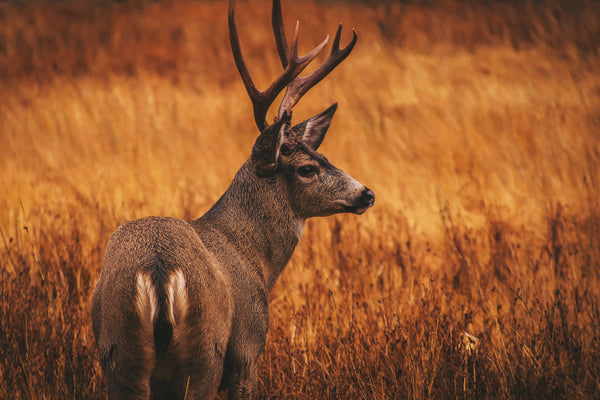What is the Best Food Plot to Plant in Fall?
Share

While farmers see fall as harvest time, hunters and wildlife enthusiasts gear up to prepare for planting. Certain varieties of food plot seeds are capable of flourishing in the cool fall climate and even colder winter months. With these food plots in place, you can rest assured that your property will be a popular spot for attracting deer and other wildlife.
What is the Best Fall and Winter Food Plot?
Hancock Seed offers a wide variety of signature series food plot mixes that are disease-resistant, drought-tolerant, and suitable for specific seasons. From brassicas to cereal grains, there are many types of food plot seeds that grow well in the fall and winter months.
Benefits of Wildlife Food Plots
For wildlife enthusiasts and hunters of all levels, wildlife food plots help bring animals to your property. Not only does this create hunting opportunities, but it can also help these wildlife populations thrive by adding protein to the herd’s diet.
Wildlife Observation & Care
During the fall and winter months, it can become much more difficult for wildlife to find food. There’s a reason why many animals go into hibernation, or their population levels drop during this time. Wildlife enthusiasts can make a difference in these animals’ lives with food plots that support their nutritional needs. You can bring deer, fowl, and other animals to your land and help them thrive during the season’s darker days. Being a steward of the land and caretaker of our wildlife is a huge responsibility not to be taken lightly.
Hunting
With so many different mixes and single-species food plots available, you have a higher chance of bringing in any type of wildlife to your plots for a prime hunting spot. While deer food plot seed is one of the most popular wildlife food plots, you can choose from food plot seeds that are consumed by:
- Deer
- Ducks
- Dove
- Turkeys
- Quail
- Pheasant
When to Plant Fall and Winter Food Plots?
If you are planting fall and winter food plots, it is crucial to read the recommended planting time of the seeds you choose. For example, most of Hancock Seed’s fall and winter food plot mixes are meant to be planted in the fall when nighttime temperatures are lower than 65 degrees. Depending on your location’s unique climate, brassicas are best planted between August and October, while cereal grains tend to thrive when sown between August and November.
Best Food Plots Seeds for Deer
Like people, deer have semi-unique tastes. One deer may like brassicas while another may be drawn to cereal grains. That’s why it can be helpful to combine mixtures and single species plots to cover all your bases and gain as many deer around your property as possible. Mixing in legume seed with your plots is highly recommended as well to add high protein levels.
Brassicas
Deer enjoy the protein and sugar found in brassicas. Brassicas offer leafy greens and delicious bulbs for deer to eat during the months when food is more difficult to find. Brassicas can also make your future plots in the area more productive and kill surrounding weeds. Common brassicas include:
- Daikon radish
- Rape
- Sugar beets
- Kale
- Mustard greens
- Purple top turnips
Cereal Grains
Cereal grains can grow up to five inches tall and are mostly enjoyed by whitetails. Mixing cereal grains with clover can help improve their taste and attract other deer. Cereal grains include:
- Oats
- Rye
- Wheat
- Triticale
Hancock Seed’s Deer Food Plot Seeds
Hancock Seed provides deer-specific food plot seeds with mixes of brassicas, cereal grains, and legumes. Some of our best deer food plot seeds include Hancock’s Ultimate Fall Food Plot Seed Mix and Hancock’s Buck Buffet Fall Food Plot Seed Mix.
Your Food Plot Experts
At Hancock Seed Co., we are here to help you with all your fall and winter food plot needs. We have been actively planting and improving for the last 40 years. Hancock Seed Co. offers a variety of seed mixtures to help you attract the animal or animals of your choice. Contact us today to learn more.















